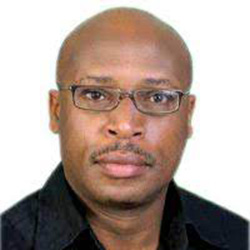Access to family planning (FP) methods bears an important aspect on the quality of women’s lives. It was therefore apt that it should draw the attention of the Senatorial Standing Committee on Social Affairs, Human Rights and Petitions.

Access to family planning (FP) methods bears an important aspect on the quality of women’s lives. It was therefore apt that it should draw the attention of the Senatorial Standing Committee on Social Affairs, Human Rights and Petitions.
In assessing the government’s FP programme and its impact towards reducing poverty nationally, the Committee recently expressed disquiet about the high fertility rates currently standing at 4.2 children per woman as per the Demographic and Health Survey (RDHS) 2014-2015.
And, with the Ministry of Gender and Family Promotion reporting that more than 17,000 girls aged 16-19 years were pregnant in 2016, it only added to the concern.
Let’s focus on the girls for a moment. The RDHS 2014-2015 gives it perspective showing that quite a high number of them are engaged in sexual activity. The survey found that while "few women reported having had sexual intercourse before age 15 (2 per cent), approximately one in five women (19 per cent) had sexual intercourse by age 18. At age 20, two in five women (39 per cent) have had sexual intercourse.”
The implications of this are obvious, with the RDHS showing it in numbers. It explains that seven per cent of young women between age 15 and age 19 have already begun childbearing. (Also see, "The NGOs should be heard in the school condom debate”, The New Times, December 03, 2016).
At age 15, says the RDHS, 1 per cent of the young women have begun childbearing, with the per centage increasing steadily and rapidly to 4 per cent by age 17. By 19 years of age, it shoots up to 21 per cent.
At the Senatorial Committee hearing, as reported in the media, the National Institute of Statistics of Rwanda (NISR) warned that if the fertility rate continues at the current trend Rwanda’s population will triple in 30 years.
Though demand for modern family planning methods stands at 72 per cent, according to the RDHS, uptake is only 53 per cent with 19 per cent unable to access FP services, mostly in the rural areas.
One analysis found two main access barriers, among others, that the government also recognises, namely, myths and misconceptions about the side-effects of contraceptives, and inadequate services for the youth.
And, that the Senatorial Committee should seek to assess the national family planning programme against the concern of high fertility rates and what it means to national development, points to a problem that still persists and that requires urgent attention.
This is not to say there haven’t been efforts to address the situation. As this column observed not too long ago drawing from local research and bears repeating, "all preventive options” are available, including "youth spaces” being provided in health centres across the country through which the young people are supposed to access contraceptives.
However, the young people are not using them. Available research shows the spaces are not youth friendly.
In a society still culturally conservative in matters sex, the youth find the spaces "too open” and their purpose known to everyone in the Umudugudu (village). They avoid approaching community health workers, who are often their elders and known to their families, to dare ask for contraceptives.
This can only mean that there is a need to reach and involve the youth in relevant reproductive health and family planning programmes to curb the high fertility rates among them.
And, as analysts have suggested, it goes without saying the necessity to vigorously address misperceptions, myths and rumours about family planning methods and their side effects, including improvement of FP method mixes. This could be through the media and, at the village level, through the extensive network of community health workers.
This brings to mind the 62nd Session of the Commission on the Status of Women set to commence next week at the United Nations Headquarters in New York, and of which Rwanda will certainly be represented.
The theme for this year is "Challenges and opportunities in achieving gender equality and the empowerment of rural women and girls”.
It ties in with the Session’s aim to work towards ensuring "participation in and access of women to the media, and information and communications technologies and their impact on and use as an instrument for the advancement and empowerment of women.”
With access to relevant information being a human rights issue, it can only be empowering that existing efforts in the country are doubled to involve and reach the women and girls with relevant and actionable information on contraceptives.
The views expressed in this article are of the author


